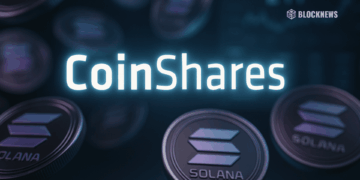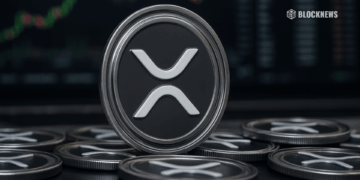- Decentralized Lending Giant: Aave is the largest DeFi lending protocol, letting users lend and borrow crypto assets through smart contracts without banks or intermediaries. It operates across Ethereum, Polygon, Avalanche, Arbitrum, and more.
- Key Features: Users earn interest via aTokens, borrow against overcollateralized deposits, and access unique tools like flash loans. Governance and protocol safety are managed through the AAVE token and its Safety Module.
- Future Outlook: Aave V4 will introduce unified cross-chain liquidity, modular risk management, and GHO stablecoin upgrades. With billions locked and expanding institutional interest, it’s set to remain a cornerstone of DeFi.
Aave, the decentralized finance protocol that emerged from the shadows of Ethereum’s early days, has grown into a multi-billion-dollar behemoth that’s rewriting the rules of lending and borrowing. With billions in total value locked and deployments across more than a dozen blockchain networks, Aave is the blueprint for a permissionless financial future. So, let us take a closer look at the project that is haunting the legacy banking system and reshaping how capital moves in the digital age.
What Is Aave?
Aave is a decentralized, non-custodial protocol that enables users to lend and borrow cryptocurrencies without relying on banks or centralized authorities. It was initially launched as ETHLend in 2017 but underwent rebranding and extensive development before emerging as Aave in 2020. Operating primarily on the Ethereum blockchain but also extending across multiple Layer 1 and Layer 2 chains such as Polygon, Avalanche, BNB Chain, and Arbitrum, Aave presents an interoperable framework for financial interaction.
At its core, Aave is a collection of smart contracts that allow users to supply crypto assets into liquidity pools, which then become available for borrowing by other participants. This pooling model promotes liquidity and access, effectively creating a permissionless credit market that anyone can enter with just a crypto wallet. By removing intermediaries, Aave delivers financial services that are faster, borderless, and transparent.
How Does It Work?
Aave operates on a liquidity pool model. Here is how the platform operates:
Lending
Users deposit supported cryptocurrencies into Aave’s liquidity pools. Upon doing so, they receive aTokens, special yield-bearing tokens pegged 1:1 to the deposited asset. These tokens represent their stake and begin accruing interest immediately. The interest rates fluctuate based on the utilization rate—the proportion of the pool currently borrowed. High demand pushes rates up, encouraging more lenders to join and borrowers to repay, while low demand lowers rates to stimulate borrowing.
Borrowing
Borrowers access liquidity by depositing collateral that exceeds the value of the loan they want to take out, following the principle of overcollateralization. This requirement minimizes the risk of default and protects lenders. Loan-to-Value (LTV) ratios define borrowing limits for each collateral type, ensuring borrowers cannot overextend. Loans can be taken at stable or variable interest rates, offering flexibility based on market conditions and individual risk appetite.
Liquidation
If the value of collateral decreases significantly—dropping the borrower’s position below safety thresholds—Aave’s liquidation mechanism kicks in. Third-party liquidators can repay a portion of the borrower’s debt and claim collateral at a discount, incentivizing them to keep the system solvent. This self-regulating process preserves the integrity and health of the platform.
Flash Loans
Aave revolutionized DeFi with the introduction of flash loans—unsecured loans that must be borrowed and repaid within the same blockchain transaction. These ultra-short-term loans enable sophisticated financial maneuvers such as arbitrage, collateral swaps, and self-liquidations without requiring upfront capital. Though complex and risky, flash loans showcase the innovative potential of DeFi protocols.
What Problems Does It Solve?
Traditional lending and borrowing are riddled with inefficiencies, barriers, and risks. Aave addresses these issues head-on:
Removal of Middlemen
Banks and financial institutions charge fees, require credit checks, and impose lengthy approval processes. Aave’s permissionless, decentralized design eliminates these gatekeepers, enabling anyone with crypto assets to lend or borrow instantly.
Global Accessibility
With no geographic or identity restrictions, Aave democratizes finance, allowing underbanked populations or those excluded by legacy systems to access liquidity and earn yields.
Transparency and Security
Smart contracts on public blockchains execute all terms autonomously, reducing fraud risk and ensuring trustless interactions. The open-source nature invites regular audits and community scrutiny.
Capital Efficiency
By enabling real-time interest accrual and flexible borrowing options, Aave maximizes capital productivity. Flash loans, in particular, unlock capital for rapid, creative strategies without collateral.
Risk Mitigation
Overcollateralization, dynamic interest rates, and liquidation mechanisms safeguard lenders against borrower defaults, making the system robust against volatility.
Utility and Offerings
Aave offers a full-fledged financial ecosystem. Its offerings are diverse, powerful, and designed to serve both retail users and institutions. This includes:
aTokens
These are interest-bearing tokens minted when users supply assets to the protocol. They represent the user’s deposit and accrue interest automatically. For example, depositing ETH yields aETH. These tokens can be transferred, used in other DeFi protocols, or redeemed for the underlying asset plus interest.
AAVE Token
The native token of the protocol, AAVE is used for governance, staking, and fee discounts. Holders can vote on proposals, stake tokens in the Safety Module to backstop the protocol, and enjoy reduced fees when borrowing. It is a multi-functional asset that aligns incentives across the ecosystem.
Flash Loans
Aave pioneered flash loans—uncollateralized loans that must be repaid within a single block. They are used for arbitrage, collateral swaps, and liquidations. While risky and complex, they showcase the composability and speed of DeFi.
Stable and Variable Interest Rates
Borrowers can toggle between stable and variable rates. Stable rates offer predictability, while variable rates reflect market conditions. This flexibility is rare in DeFi and gives users more control over their financial strategies.
Safety Module
AAVE holders can stake tokens in the Safety Module, which acts as insurance against protocol shortfalls. In return, stakers earn rewards and protocol fees. It is a decentralized risk management system that reinforces the protocol’s resilience.
GHO Stablecoin
Aave’s native stablecoin, GHO, is overcollateralized and designed for DeFi-native use cases. It introduces features like soft liquidations, interest payments in GHO, and emergency repayment mechanisms.
Ecosystem Highlights
Aave’s growth has been nothing short of explosive. With deployments across 12+ networks and billions in total value locked, it is one of the most widely used DeFi protocols in existence. Some key highlights include:
- Total Value Locked – With around $10 billion locked across multiple blockchains, Aave commands one of the largest liquidity pools in DeFi, signaling widespread user trust and adoption.
- Multi-Chain Presence – Expanding beyond Ethereum to Avalanche, Polygon, BNB Chain, and several Layer 2 networks, Aave addresses scalability challenges and broadens access across diverse blockchain communities.
- Institutional Interest – Aave has garnered attention from institutional investors exploring DeFi exposure, further legitimizing decentralized lending as a credible financial service.
- Partnerships and Integrations – Collaborations with wallets, data analytics firms, and other DeFi protocols have enhanced user experience, security, and cross-platform functionality, reinforcing Aave’s position as a foundational layer in the DeFi stack.
- Developer and Community Engagement – Active governance participation and an engaged developer community continuously improve the protocol’s features, security, and adaptability to market trends.
Roadmap and Plans Ahead
Aave’s future is anchored by the launch of Aave V4, a major protocol upgrade designed to elevate cross-chain interoperability and capital efficiency. At the heart of V4 is a unified liquidity layer, enabling seamless asset movement across networks. This architecture will empower users to supply liquidity on one chain and borrow on another without relying on fragmented bridges or third-party platforms.
The upgrade introduces dynamic interest rates powered by Chainlink oracles, offering real-time responsiveness to market conditions. Risk management will become modular, giving the protocol customizable tools for asset-specific risk profiles. Gas costs will also be optimized, improving usability on both high- and low-throughput chains. Expansion to non-EVM chains is in the pipeline, opening Aave to entirely new user bases.
Moreover, the GHO stablecoin will see major functionality upgrades, including soft liquidations via AMMs, interest payments in GHO, and emergency repayment mechanisms, making it more resilient in volatile markets.
In addition to this, governance is set to evolve into a more structured framework with proactive budgeting, transparent funding, and increased community-led development. A refreshed visual identity is also on the horizon, signaling Aave’s maturation and ambition as a global DeFi leader.
Final Thoughts
In conclusion, Aave stands as one of the most sophisticated and battle-tested DeFi protocols in existence. From flash loans that challenge traditional capital requirements to a governance system that empowers its community, Aave has pushed boundaries and set standards others still chase. So, as it gears up for its next evolution with V4 and deeper multi-chain integration, it will be interesting to see how far it can stretch the limits of decentralized finance.














